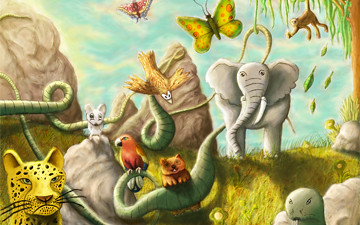Biodiversity is the variation of life forms within a given ecosystem, biome, or on the entire Earth. Biodiversity is often used as a measure of the health of biological systems. The biodiversity found on Earth today consists of many millions of distinct biological species. The year 2010 has been declared as the International Year of Biodiversity.
Biodiversity is not distributed evenly on Earth, but is consistently rich in the tropics and in specific localized regions such as the Cape Floristic Province; it is less rich in polar regions where fewer species are found.
Rapid environmental modifications typically cause extinctions.[1] Of all species that have existed on Earth, 99.9 percent are now extinct.[2] Since life began on Earth, five major mass extinctions have led to large and sudden drops in the biodiversity of species. The Phanerozoic eon (the last 540 million years) marked a rapid growth in biodiversity in the Cambrian explosion—a period during which nearly every phylum of multicellular organisms first appeared. The next 400 million years was distinguished by periodic, massive losses of biodiversity classified as mass extinction events. The most recent, the Cretaceous–Tertiary extinction event, occurred 65 million years ago, and has attracted more attention than all others because it killed the nonavian dinosaurs.[3]
Today there is concern that the period since the emergence of humans is part of a mass reduction in biodiversity, the Holocene extinction, caused primarily by the impact humans are having on the environment, particularly the destruction of plant and animal habitats. In addition, human practices have caused a loss of genetic biodiversity. The relevance of biodiversity to human health is becoming a major international issue, as scientific evidence is gathered on the global health implications of biodiversity loss.
(From Wikipedia.org, August 2 1010)


